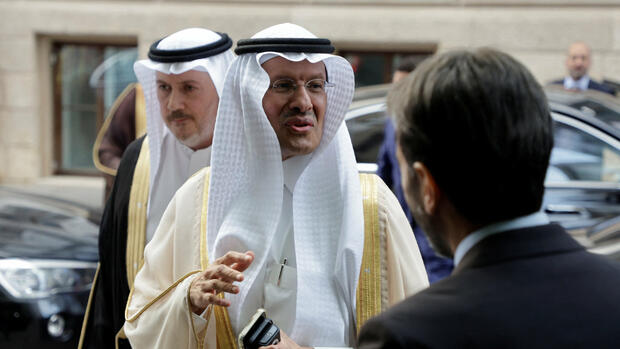Saudi Arabia relies on a fairly high oil price to cover all government spending.
(Photo: Reuters)
Frankfurt Saudi Arabia will voluntarily cut its oil production by one million barrels a day in July. This step can be renewed monthly. According to the Saudi Arabian Ministry of Energy, this is a precautionary measure intended to ensure market stability, according to the state news agency Saudi Press Agency.
The kingdom made this decision as part of the Opec-plus meeting that took place in Vienna on Sunday. After hours of negotiations, the oil cartel decided to set its production target for 2024 at around 40 million barrels a day. This reduces the production volume by almost 1.4 million barrels per day compared to the currently targeted production.
The oil-exporting countries have made no changes to the planned oil production cuts for this year. In addition, the member states announced that they would extend their voluntary cuts by another year.
Background: 13 oil-exporting countries – including Saudi Arabia, the United Arab Emirates (UAE), Angola and Venezuela – have joined forces in OPEC to ensure that they can continue to earn good income from the sale of crude oil on the world market. In order to have more influence on the oil market, OPEC is also working with ten non-member countries, including Russia. This cooperation is called Opec plus.
Saudi Arabia’s cut comes as a surprise
For UBS commodities expert Giovanni Staunovo, Saudi Arabia’s voluntary cut in production came as a surprise. “This shows that Saudi Arabia has a keen interest in the oil market stabilizing. Saudi Arabia sees itself in the role of a central bank of the oil market and fills this role.”
He attaches less importance to lowering the production target for 2024. The background is that some African countries are not making full use of their funding quotas and the United Arab Emirates will now partially fill this gap.
That was also the reason why the negotiations between the OPEC plus countries this Sunday in Vienna dragged on longer than usual. According to Bloomberg, the United Arab Emirates (UAE) were pushing for an increase in the production level allocated to them. The Emirates have invested heavily in new production capacity in the past, but are unable to use it due to their rigid obligations to OPEC.
At the same time, four of the five West African OPEC members are unable to meet their production targets. In May, their total production was more than 800,000 barrels per day below what they are allowed to produce, according to Bloomberg.
In April, the oil cartel surprised with production cuts, now there is a dispute about which country should produce how much oil.
(Photo: Reuters)
The UAE therefore demanded that the African countries surrender part of their unused quotas to them. But several African countries want to invest in their production in the future and also want to be able to use these new capacities when they go into operation.
This would not be possible with lower funding rates. After long discussions, Opec-plus agreed to reset the production levels of its member states for 2024. UAE production levels will increase by around 200,000 barrels per day at the expense of countries like Nigeria and Angola, which have not yet been able to fill their quotas.
Weakening energy demand increases the pressure
The meeting of states was pushed back and forth over the course of Sunday. The delay showed that tensions within the oil cartel were growing.
The main reason for this is the weakening demand for energy, which has caused the price of oil to fall. The Opec-plus members had already met in April and surprisingly announced that they would reduce their oil production by a total of 1.15 million barrels per day from May. Russia had already decided in March to reduce production by 500,000 barrels a day.
The oil price was initially boosted by the decision and rose to over 87 US dollars per barrel in mid-April, but then continued to fall and lost well over ten percent. This was partly due to the weak economic environment, in particular the disappointing economic recovery in China.
Discussions about Russia create tension
In addition, Russia has so far failed to keep its promise to cut oil production. Russia has strong incentives to undermine oil exporters’ agreements because the country depends on energy export revenues for its war of aggression against Ukraine.
This is particularly bitter for Saudi Arabia: Russia is taking market shares from the kingdom, especially in India, as Bloomberg reported, citing data from the ship analysis company Vortexa. According to estimates by the International Monetary Fund, Saudi Arabia needs an oil price of around $81 to finance its government spending.
For this reason, there had already been tensions in the run-up to the OPEC meeting, which was also reflected in the non-invitation of journalists from Bloomberg and Reuters to press conferences.
More: Why the price of oil could rise in the long term
